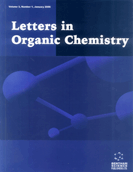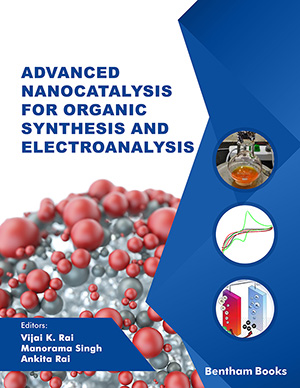Abstract
Laccase (Benzenediol: oxygen oxidoreductase; E.C.1.10.3.2), a multicopper oxidase that is a known lignin-degrading enzyme, can catalyse an ample array of substrates, from phenolic, nonphenolic compounds, aromatic amines, diamines, heterocyclic compounds to organic/inorganic metal compounds, etc., bestowed they have not too high redox potentials. Despite many laccase-producing organisms like bacteria, insects, plants, and animals, white rot filamentous fungi are the best producers of this enzyme. In the presence of laccase, pesticides (fungicides, herbicides, insecticides, etc.) of various chemical compositions (organophosphates, organochlorines, carbamates, pyrethrin & pyrethroids, etc.) are oxidized into the water with collateral reduction of four electrons of molecular oxygen with various efficiencies. Bioremediation efficiency can be increased in the presence of various natural or synthetic mediators, viz. ABTS, violuric acid, 1- hydroxy benzotriazole, vanillin, syringaldehyde, PEG, etc. Immobilized laccase on various supporting materials increased the enzyme's stability, reliability, and reusability for continuous application, particularly for industrial processes. The present review discusses the structure, catalytic cycle, general mechanism of oxidation, and various scopes and challenges of pesticide degradation by this multifaceted biocatalyst which could lead to a green sustainable environment.
Keywords: Laccase, pesticide, bioremediation, mediators, immobilization, oxidation, redox potentials, green chemistry.
[http://dx.doi.org/10.3389/fbioe.2021.770435] [PMID: 35223809]
[http://dx.doi.org/10.1002/etc.5620220327] [PMID: 12627656]
[http://dx.doi.org/10.1134/S0026261717060145]
[http://dx.doi.org/10.5897/AJMR2016.8402]
[http://dx.doi.org/10.1016/j.jwpe.2021.102009]
[http://dx.doi.org/10.1038/srep35787] [PMID: 27775052]
[http://dx.doi.org/10.1186/s12885-017-3346-x] [PMID: 28525996]
[http://dx.doi.org/10.1016/j.envres.2020.110023] [PMID: 32777276]
[http://dx.doi.org/10.1007/s42452-019-1485-1]
[http://dx.doi.org/10.1016/j.chemosphere.2009.06.007] [PMID: 19570564]
[http://dx.doi.org/10.1016/S0960-8524(00)00080-8] [PMID: 11272011]
[http://dx.doi.org/10.1007/s42398-020-00099-w]
[http://dx.doi.org/10.1007/s11368-013-0705-3]
[http://dx.doi.org/10.1007/s00253-016-7364-4] [PMID: 26860944]
[http://dx.doi.org/10.1007/978-981-10-8390-7_1]
[http://dx.doi.org/10.1039/CT8834300472]
[http://dx.doi.org/10.1186/s10086-021-01943-1]
[http://dx.doi.org/10.1016/j.jclepro.2009.11.014]
[http://dx.doi.org/10.1016/S0924-2244(02)00155-3]
[http://dx.doi.org/10.1007/s11157-014-9344-4]
[http://dx.doi.org/10.1016/j.pursup.2015.07.001]
[http://dx.doi.org/10.1016/j.bcab.2019.101174]
[http://dx.doi.org/10.1016/j.ibiod.2008.09.010]
[http://dx.doi.org/10.1002/app.47417]
[http://dx.doi.org/10.1007/s00449-017-1783-1] [PMID: 28536853]
[http://dx.doi.org/10.5897/AJB11.2050]
[http://dx.doi.org/10.1186/1475-2859-7-32] [PMID: 19019256]
[http://dx.doi.org/10.1128/aem.60.9.3413-3415.1994] [PMID: 16349390]
[http://dx.doi.org/10.1128/JB.181.21.6730-6738.1999] [PMID: 10542175]
[http://dx.doi.org/10.1128/JB.183.18.5426-5430.2001] [PMID: 11514528]
[http://dx.doi.org/10.1016/S0944-5013(97)80014-6]
[PMID: 6204187]
[http://dx.doi.org/10.1271/bbb.67.2167] [PMID: 14586105]
[http://dx.doi.org/10.1099/00221287-148-6-1767] [PMID: 12055296]
[http://dx.doi.org/10.1006/bbrc.1997.7748] [PMID: 9398646]
[http://dx.doi.org/10.1016/j.enzmictec.2005.01.003]
[http://dx.doi.org/10.1007/s11274-006-9305-3]
[http://dx.doi.org/10.3389/fmicb.2019.01895] [PMID: 31507545]
[http://dx.doi.org/10.1007/s12088-009-0039-4] [PMID: 23100763]
[http://dx.doi.org/10.1007/s00425-014-2144-9] [PMID: 25115562]
[http://dx.doi.org/10.1093/femsle/fnv072] [PMID: 25926529]
[http://dx.doi.org/10.1371/journal.pone.0175144] [PMID: 28384218]
[http://dx.doi.org/10.1016/j.procbio.2008.02.017]
[http://dx.doi.org/10.1134/S0003683807050055] [PMID: 18038679]
[http://dx.doi.org/10.1007/s10295-006-0191-3] [PMID: 17171552]
[http://dx.doi.org/10.1007/PL00013978]
[http://dx.doi.org/10.1104/pp.99.3.1162] [PMID: 16668984]
[PMID: 8485457]
[http://dx.doi.org/10.1016/S0021-9258(18)71317-3] [PMID: 13130548]
[http://dx.doi.org/10.1016/S0031-9422(96)00489-X]
[http://dx.doi.org/10.1046/j.1432-1327.1999.00061.x] [PMID: 9914531]
[http://dx.doi.org/10.1046/j.1365-313X.1994.6020213.x]
[http://dx.doi.org/10.1042/bj1010569] [PMID: 16742427]
[http://dx.doi.org/10.1111/j.1365-2621.1980.tb07575.x]
[http://dx.doi.org/10.1016/0040-8166(88)90073-0] [PMID: 3148210]
[http://dx.doi.org/10.1139/z87-181]
[http://dx.doi.org/10.1016/0020-1790(89)90095-4]
[http://dx.doi.org/10.1002/arch.940190406] [PMID: 1600191]
[http://dx.doi.org/10.1111/j.1550-7408.1985.tb04052.x] [PMID: 3930706]
[http://dx.doi.org/10.1007/s12088-008-0028-z] [PMID: 23100727]
[http://dx.doi.org/10.1073/pnas.0504982102] [PMID: 16076951]
[http://dx.doi.org/10.15244/pjoes/68428]
[http://dx.doi.org/10.1016/j.ibiod.2006.11.001]
[http://dx.doi.org/10.1016/j.jenvman.2016.12.068] [PMID: 28056354]
[http://dx.doi.org/10.1016/j.tox.2018.09.009] [PMID: 30266654]
[http://dx.doi.org/10.3390/ijerph14111372] [PMID: 29125583]
[http://dx.doi.org/10.3390/ijerph16010146] [PMID: 30621114]
[http://dx.doi.org/10.1016/j.chemosphere.2020.128873] [PMID: 33220978]
[http://dx.doi.org/10.1007/s10653-005-9028-7] [PMID: 16547764]
[http://dx.doi.org/10.1007/s11356-015-5225-9] [PMID: 26370807]
[http://dx.doi.org/10.1007/s11270-016-2894-z]
[http://dx.doi.org/10.1016/j.ccr.2016.03.006]
[http://dx.doi.org/10.1007/BF02932098] [PMID: 18062192]
[http://dx.doi.org/10.1515/intox-2016-0012] [PMID: 28652852]
[http://dx.doi.org/10.1016/j.ecoenv.2013.02.005] [PMID: 23474069]
[http://dx.doi.org/10.3109/07388559209114232] [PMID: 1423649]
[http://dx.doi.org/10.1016/j.chemosphere.2016.12.129] [PMID: 28061345]
[http://dx.doi.org/10.1016/j.jhazmat.2012.11.046] [PMID: 23246958]
[http://dx.doi.org/10.1016/j.aquatox.2017.04.013] [PMID: 28460306]
[http://dx.doi.org/10.1099/ijs.0.63716-0] [PMID: 16166673]
[http://dx.doi.org/10.1016/j.envint.2017.06.017]
[http://dx.doi.org/10.1186/s12859-017-1741-6] [PMID: 28693417]
[http://dx.doi.org/10.1016/j.tox.2012.06.009] [PMID: 22728724]
[PMID: 1713367]
[http://dx.doi.org/10.1002/(SICI)1099-1263(199901/02)19:1<67:AID-JAT540>3.0.CO;2-#] [PMID: 9989480]
[http://dx.doi.org/10.1080/13590849961825]
[http://dx.doi.org/10.1016/S0378-4274(00)00277-0] [PMID: 11137320]
[http://dx.doi.org/10.1042/bj3570065] [PMID: 11415437]
[http://dx.doi.org/10.1016/S0300-483X(02)00058-6] [PMID: 12049839]
[http://dx.doi.org/10.1007/s00018-014-1827-5] [PMID: 25586561]
[http://dx.doi.org/10.1111/j.1574-4976.2005.00010.x] [PMID: 16472305]
[http://dx.doi.org/10.1007/s002530100727] [PMID: 11693941]
[http://dx.doi.org/10.1099/00221287-139-1-179]
[http://dx.doi.org/10.1128/aem.61.3.907-912.1995] [PMID: 16534974]
[http://dx.doi.org/10.1186/s40643-018-0190-z]
[http://dx.doi.org/10.1021/ja0421405] [PMID: 16201804]
[http://dx.doi.org/10.1016/0162-0134(93)85478-Q]
[http://dx.doi.org/10.1007/s00018-009-0169-1] [PMID: 19844659]
[http://dx.doi.org/10.1021/ja991087v]
[http://dx.doi.org/10.1074/jbc.M204571200] [PMID: 12163489]
[http://dx.doi.org/10.1007/s00018-014-1826-6] [PMID: 25572295]
[http://dx.doi.org/10.1016/j.jmb.2009.06.053] [PMID: 19563811]
[http://dx.doi.org/10.1021/bi0201318] [PMID: 12044164]
[http://dx.doi.org/10.1021/ct500196e] [PMID: 26588316]
[http://dx.doi.org/10.1016/j.jmb.2004.07.100] [PMID: 15364578]
[http://dx.doi.org/10.3390/catal8040152]
[http://dx.doi.org/10.1016/j.bbapap.2009.12.018] [PMID: 20056172]
[http://dx.doi.org/10.1016/j.molcatb.2008.09.004]
[http://dx.doi.org/10.1021/bi952971a] [PMID: 8652543]
[http://dx.doi.org/10.1042/bj3340063] [PMID: 9693103]
[http://dx.doi.org/10.1016/j.fbr.2013.07.001]
[http://dx.doi.org/10.1021/ar600051a] [PMID: 17425282]
[http://dx.doi.org/10.1107/S1399004714020380] [PMID: 25372682]
[http://dx.doi.org/10.1021/ja105586q] [PMID: 21388209]
[http://dx.doi.org/10.1002/1521-3773(20011217)40:24<4570:AID-ANIE4570>3.0.CO;2-4] [PMID: 12404359]
[http://dx.doi.org/10.1021/ja00022a064]
[http://dx.doi.org/10.1021/ic050092z] [PMID: 16060610]
[http://dx.doi.org/10.1016/j.biochi.2006.02.007] [PMID: 16581176]
[http://dx.doi.org/10.1021/ja010365z] [PMID: 11439045]
[http://dx.doi.org/10.1021/ja073947a] [PMID: 17918839]
[http://dx.doi.org/10.1002/adsc.200800775]
[http://dx.doi.org/10.1016/j.ica.2008.03.091]
[http://dx.doi.org/10.1016/S1567-5394(02)00119-6] [PMID: 12414320]
[http://dx.doi.org/10.1016/S0168-1656(00)00208-X] [PMID: 10725542]
[http://dx.doi.org/10.1128/AEM.66.2.524-528.2000] [PMID: 10653713]
[http://dx.doi.org/10.1016/j.biotechadv.2010.05.002] [PMID: 20471466]
[http://dx.doi.org/10.1039/b507657a]
[http://dx.doi.org/10.1039/B208951C] [PMID: 12929410]
[http://dx.doi.org/10.1002/1099-0690(200212)2002:24<4195:AID-EJOC4195>3.0.CO;2-X]
[http://dx.doi.org/10.1016/j.electacta.2008.10.059]
[http://dx.doi.org/10.1016/S0304-4165(97)00117-7] [PMID: 9545600]
[http://dx.doi.org/10.3390/en11123455]
[http://dx.doi.org/10.1016/S0168-1656(00)00303-5] [PMID: 10989177]
[http://dx.doi.org/10.1128/AEM.66.5.2052-2056.2000] [PMID: 10788380]
[http://dx.doi.org/10.1016/S1381-1177(01)00067-4]
[http://dx.doi.org/10.1016/S1381-1177(03)00014-6]
[http://dx.doi.org/10.1016/j.molcatb.2003.08.001]
[http://dx.doi.org/10.1055/s-1996-4369]
[http://dx.doi.org/10.17485/ijst/2010/v3i1.8]
[http://dx.doi.org/10.1016/S0032-9592(02)00023-7]
[http://dx.doi.org/10.1007/978-1-61779-151-2_29]
[http://dx.doi.org/10.1016/j.molcatb.2007.12.021]
[http://dx.doi.org/10.1016/j.chemosphere.2019.05.144]
[http://dx.doi.org/10.1007/BF02702656]
[http://dx.doi.org/10.1016/j.memsci.2005.06.039]
[http://dx.doi.org/10.1002/bit.260240809] [PMID: 18548439]
[http://dx.doi.org/10.1016/j.biombioe.2011.07.010]
[http://dx.doi.org/10.1186/s12896-021-00709-3] [PMID: 34353307]
[http://dx.doi.org/10.1016/j.envpol.2020.115827] [PMID: 33096462]
[http://dx.doi.org/10.1016/j.jbiotec.2020.05.004] [PMID: 32447128]
[http://dx.doi.org/10.3390/catal8020092]
[http://dx.doi.org/10.1016/j.cej.2020.126272]
[http://dx.doi.org/10.1016/j.marpolbul.2021.112247] [PMID: 33735702]
[http://dx.doi.org/10.1038/srep41214] [PMID: 28117357]
[http://dx.doi.org/10.1038/s41598-017-16771-x] [PMID: 29180686]
[http://dx.doi.org/10.3389/fmicb.2020.620075] [PMID: 33537019]
[http://dx.doi.org/10.1007/s11274-007-9617-y]
[http://dx.doi.org/10.1021/acssuschemeng.7b02465]
[http://dx.doi.org/10.1007/s13205-020-02363-6]
[http://dx.doi.org/10.1021/cr068445e] [PMID: 18543879]
[http://dx.doi.org/10.1016/j.biomaterials.2004.10.012] [PMID: 15626447]
[http://dx.doi.org/10.1016/j.ijbiomac.2018.03.086] [PMID: 29567496]
[http://dx.doi.org/10.1021/ja021223n] [PMID: 12580578]
[http://dx.doi.org/10.1016/j.bej.2009.02.005]
[http://dx.doi.org/10.1016/j.nbt.2016.12.003] [PMID: 28011289]
[http://dx.doi.org/10.1016/j.btre.2020.e00553] [PMID: 33240797]
[http://dx.doi.org/10.1039/C7NJ03619A]
[http://dx.doi.org/10.1155/2017/5657271]
[http://dx.doi.org/10.9790/3008-1202022028]
[http://dx.doi.org/10.1007/s11356-018-4010-y] [PMID: 30607853]
[http://dx.doi.org/10.4014/jmb.1212.12057] [PMID: 23676909]
[http://dx.doi.org/10.1002/jctb.5454]
[http://dx.doi.org/10.2298/JSC160128066W]
[http://dx.doi.org/10.1016/j.ijbiomac.2019.12.068] [PMID: 31830449]
[http://dx.doi.org/10.1021/bp050251h] [PMID: 16599557]
[http://dx.doi.org/10.1007/s10532-009-9263-1] [PMID: 19396551]
[http://dx.doi.org/10.1016/j.bej.2016.12.016]
[http://dx.doi.org/10.1016/j.mset.2018.04.002]
[http://dx.doi.org/10.1128/aem.57.1.219-222.1991] [PMID: 2036008]
[http://dx.doi.org/10.1016/j.ibiod.2016.04.027]
[http://dx.doi.org/10.1021/acs.jafc.6b02187] [PMID: 27499219]
[http://dx.doi.org/10.1007/s13213-019-01536-w]
[http://dx.doi.org/10.1016/j.biortech.2015.10.054] [PMID: 26519700]
[http://dx.doi.org/10.1021/jf000397q] [PMID: 11052694]
[http://dx.doi.org/10.1016/j.ecoenv.2020.110561] [PMID: 32276163]
[http://dx.doi.org/10.1016/j.scitotenv.2020.139183] [PMID: 32388161]
[http://dx.doi.org/10.1021/acs.bioconjchem.7b00739] [PMID: 29337540]
[http://dx.doi.org/10.1097/00010694-198905000-00007]
[PMID: 18839595]
[http://dx.doi.org/10.1007/s11356-016-6502-y] [PMID: 27023821]
[http://dx.doi.org/10.1016/j.biortech.2009.10.087] [PMID: 19948398]
[http://dx.doi.org/10.3866/PKU.WHXB20010414]
[http://dx.doi.org/10.1016/j.watres.2009.09.058] [PMID: 19854464]
[http://dx.doi.org/10.1584/jpestics.9.433]
[http://dx.doi.org/10.1016/S0014-5793(98)01300-3] [PMID: 9827544]
[http://dx.doi.org/10.1038/s41598-018-31082-5] [PMID: 30143738]



























